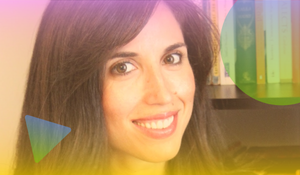Representative politics in the United States, Canada, and the United Kingdom operate on a plurality vote. In short: everyone votes for the candidate they feel is the best option and the person with the most votes wins. Elections typically anger a lot of people. Your candidate didn’t get in, or you didn’t feel anyone on the ballot fully represented your views.
The frustration inherent with a winner-takes-all system can feel like a nuisance citizens must bear in the spirit of a healthy democracy. But Sara Wolk, who is Executive Director of the Equal Vote Coalition, thinks there’s a better – and more democratic – way to vote.
In a Plumia Talks live interview, Wolk outlined the problems of modern election systems and how starred voting could help.
The spoiler effect
Wolk says that plurality systems, like first-past-the-post, can be effective in two-party elections. A problem arises, however, when there are three or more candidates, which there often are. “We end up with a winner who was opposed by the majority and everything just goes downhill from there,” Wolk says.
With multiple candidates comes the “spoiler effect” – when a minor candidate, who isn’t going to win, can still affect the vote’s outcome. It’s a mathematical problem that occurs because plurality systems give voters only one choice, so if there are three or more options on the ballot, votes get split between the majority and minority candidates.
This creates a political glass ceiling. The problem isn’t a shortage of viable candidates, but rather parties limiting the field in an attempt to combat the spoiler effect. “New people are often told, ‘Wait your turn, we need to strategically run this candidate that has better name recognition’,” Wolk says. Further, more candidates could create further spoiler effects where the winner by plurality has an increasingly small absolute number of votes.
What’s worse is that even when a new candidate does come onto the scene, people still have to vote strategically. If they don’t think their candidate can comfortably win, they have to vote for the candidate who is close-enough but “electable.”
“When we're getting into the public opinion of who looks ‘electable’, all sorts of implicit bias comes into play,” Wolk says.
A STAR solution
Wolk believes the key to electoral reform is a system called STAR Voting.
“STAR” stands for “Score Then Automatic Runoff.” This voting method allows people to give individual candidates a star rating from zero to five (zero being the least favorable and five being first choice). The two candidates with the most stars become finalists. The candidate preferred by the most voters wins.
STAR Voting differs from Ranked Choice Voting in that it allows voters to score candidates however they choose. Wolk describes it as an “expressive voting method.” For instance, you can select five stars for every candidate you’d be happy with, whereas in a Ranked Choice Voting system, you’d be forced to rank them.
This means you can support broader coalitions of candidates that promise to work together if they’re elected. You may not get the person you like most, but you can have higher confidence that your views will be represented.
“It fits right in that sweet spot for cognitive load,” Wolk says. “Humans like to have choices and variety. But if you give us 10 options and we have to rank them specifically, it can be overwhelming.”
Choosing candidates
No national government is currently using STAR voting, and Wolk is candid about the reality of that changing any time soon. “I don't want to downplay how difficult [the work of electoral reform] is,” she says. “It takes a broad coalition, and a clear and focused solution that we have consensus around.”
Where gains are happening, however, is at the local level. “Minor parties [and] third parties can use whatever voting method they want without the government's permission,” Wolk says. In the US state of Oregon, the Democratic party has already adopted STAR voting for some counties.
Wolk adds that political parties can use STAR Voting for their internal elections without asking for permission. This means that politicians can try out the system and see how it works, hopefully leading to more support for an overall change.
For those interested in experimenting with STAR Voting, it’s possible to create secure polls on the STAR.vote website. Google Forms also has a STAR voting feature.
Watch our full interview with Sara Wolk:
Want to stay in touch?
- Subscribe to the Plumia newsletter to hear about our next post.
- Connect with Plumia on Twitter, LinkedIn and YouTube.




